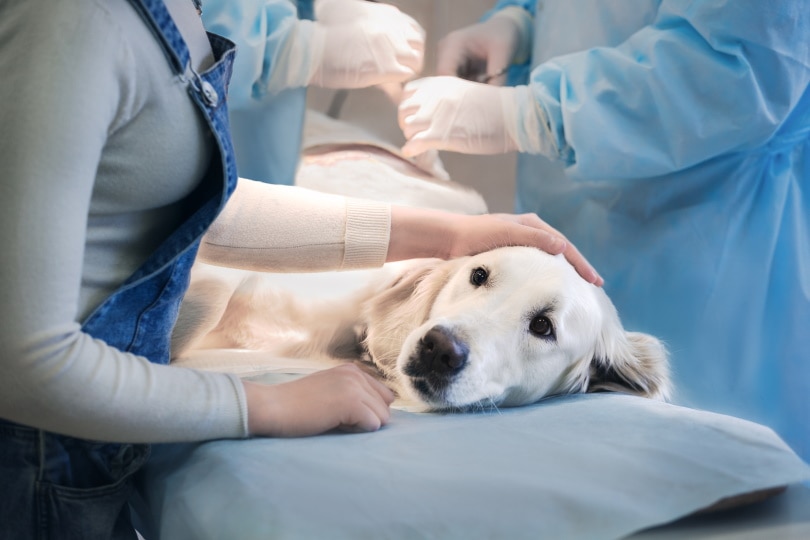
Many dogs are active, athletic beings that do not like much downtime. They love to run and play, which makes them so popular as pets. Sometimes, dogs develop health conditions, such as elbow dysplasia, that affect their movement and quality of life as time goes on.
Therefore, it is important to understand what elbow dysplasia is, how to identify its development, and how to treat it so you can ensure comfort and happiness for your dog should they develop the condition at some point.
What Is Elbow Dysplasia?
Elbow dysplasia is a condition in which the joints at the elbow do not fit together properly due to joint growth abnormalities. There are multiple different forms of elbow dysplasia, based on the specific disease present in the elbow joints. These are:
Unfortunately, elbow dysplasia is common among many breeds, and any dog can develop it. The condition can be inherited from either or both parents and can be passed down through generations. As a dog grows, the elbow joint abnormalities worsen and can result in pain, the inability to get around easily, and even complete lameness in severe cases.
This health condition is most prevalent in medium and large-sized dogs, but even small dogs can be affected. Understanding the history of a puppy’s parents and their bloodlines can offer clues as to whether a pup may develop elbow dysplasia when they get older.
However, there is no way to know for sure whether a dog will suffer from the condition until it starts to develop.

How to Identify Elbow Dysplasia
To verify whether a dog has elbow dysplasia, a veterinarian or clinician must evaluate and diagnose the dog. However, there are a few signs you can look for that may indicate the development of this health condition.
Owners with dogs that are predisposed to the possibility of developing elbow dysplasia should keep an eye out for the following signs:
If any signs of elbow dysplasia are noticed, it is important to schedule an appointment with your veterinarian for evaluation and diagnosis. They will do this through physical, X-ray, and radiographic examinations. The earlier that elbow dysplasia is diagnosed, the better that the condition can be managed.
How to Treat Elbow Dysplasia

Treatment for elbow dysplasia depends on the specific disease that is causing it and the severity of the condition overall. Sometimes, surgery is necessary if the bones can be realigned or fused for improved movement and comfort. Surgery may also involve the use of instruments to clean the joint surfaces for better support and more range of movement. When surgery is not a necessity, there are several treatment options to consider. These include:
The type of treatment that your dog can benefit from depends on many factors, including the severity of their condition, their signs, level of pain, breed, age, and lineage. Your veterinarian can help you create an effective treatment plan for both short-term and long-term relief.
Final Thoughts
Elbow dysplasia is a serious condition that should not go overlooked. If left unchecked and untreated, the condition could result in complete lameness and low quality of life. In some cases, it can even cause death. Luckily, catching the problem early so it can be addressed can help ensure a long and happy life for your pooch.
Featured Image Credit: shelma25, Pixabay






